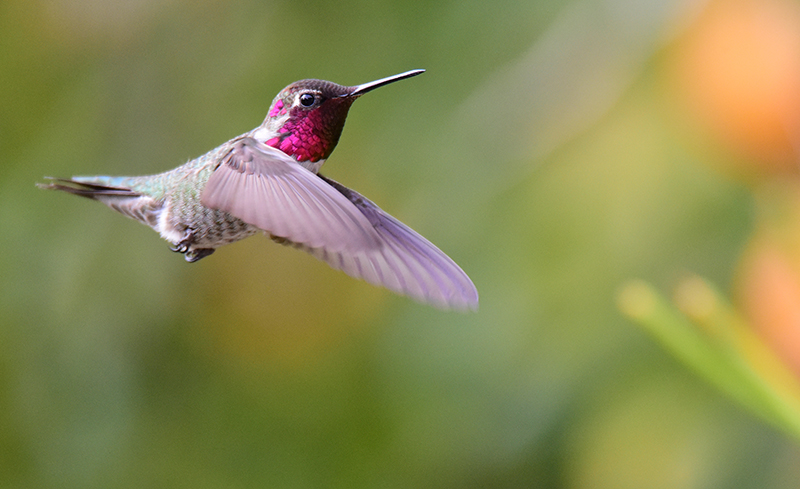Enjoying Hummingbirds
By Myrna Pearman, Mother Nature’s Naturalist and Backyard Birding Expert
Hummingbirds add colour and interest to our yards, so it is not surprising that many gardeners and backyard bird enthusiasts go to great lengths to attract them.

The healthiest way to attract hummingbirds is to have a pesticide-free yard and to offer these amazing little birds a range of nectar-producing plants. Check your local Buckerfield’s for the following shrubs, annuals and perennials:
Shrubs
- Crabapple
- Lilacs
- Lonicera / Honeysuckle
Annuals
- Petunia
- Lantana
- Calibrachoa
- Mandevilla (tropical, can be grown as an annual)
Perennials
- Kniphofia / Red Hot Poker
- Monarda / Bee Balm
- Lavatera / Rose Mallow (mostly Perennial, tender in the Interior)
- Hemerocallis / Day Lily
- Weigela
- Spirea
- Vermillonaire / Firecracker plant
- Buddleia
- Hibiscus (Perennial/Annual)
- Hosta
- Nepeta / Cat Mint
- Salvia
- Delphinium (Perennial/Wildflower)
- Asclepias / Butterfly Weed (Wildflower)
- Bleeding Heart / Dicentra (Perennial/Wildflower)

While natural food sources are much healthier for hummingbirds than sugar water, hummingbird feeders provide a supplemental food source and will bring the birds in for close viewing. Make a homemade syrup by dissolving one-part white sugar (sucrose) in four parts hot water. Never use honey, artificial sweeteners, fruit juices, flavoured drinks or pop, and never add food coloring. If possible, hang hummer feeders in the shade. Replace the syrup and clean all feeders every few days, especially during hot weather.
Hummingbirds, especially the males, can be very aggressive around their food sources, so place a few feeders widely spaced around your yard, preferably out of view of each other. This placement will make it impossible for one aggressive individual to dominate them all.
Hummingbirds also love to bathe in both shallow water as well as in water mist. Water misters, which attach to the end of a garden hose, are commercially available. Direct the mist towards a nearby shrub so the birds have the choice of flying through the mist or sitting on a branch to bathe.

Speaking of branches, hummers need to rest between feedings, so they will often land on a small dead branch to rest, groom and sleep. Dead branches will also be used by male hummers to watch and guard their kingdom. Females will choose a horizontal branch in a tree or shrub to build her delicate little nest of lichens and spiderwebs.

Vancouver Island and the Lower Mainland are home to two species of hummers, the Rufous and the Anna’s. Interestingly, this is the only place in Canada where Anna’s Hummingbirds, which are a very hardy species, will live year-round. The Rufous migrates south for the winter.
Overwintering Anna’s are resourceful at finding food items. In addition to sugar-water feeders, they will nectar at any suitable blossoms that they can find and will also dine on any small insects and spiders that they find as well as tree sap. During cold snaps, caring humans will often also set out heat lamps and other warm shelters for them.
Enjoy the hummers!
Have more questions? Visit your local Buckerfield's and we'll be happy to help!



